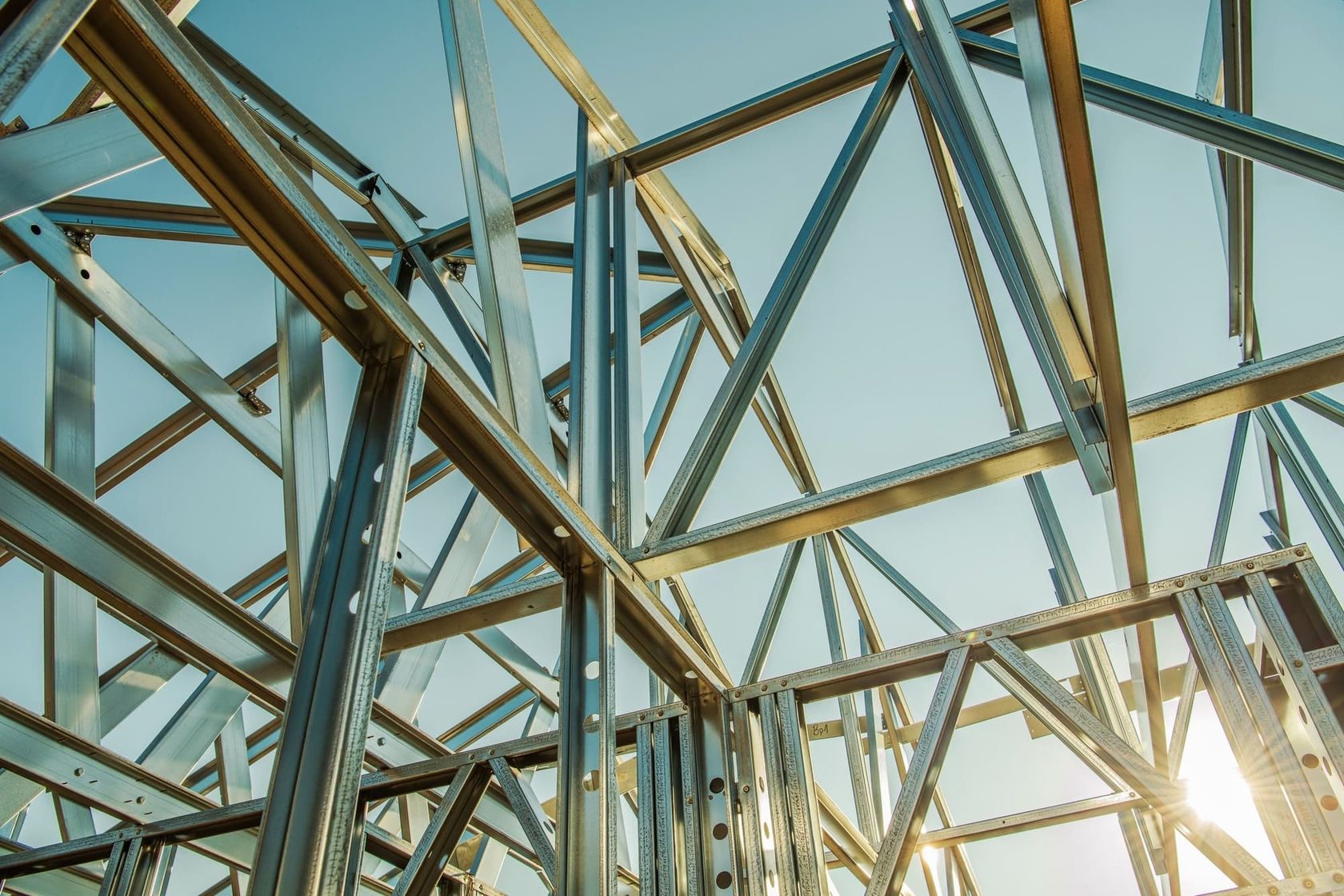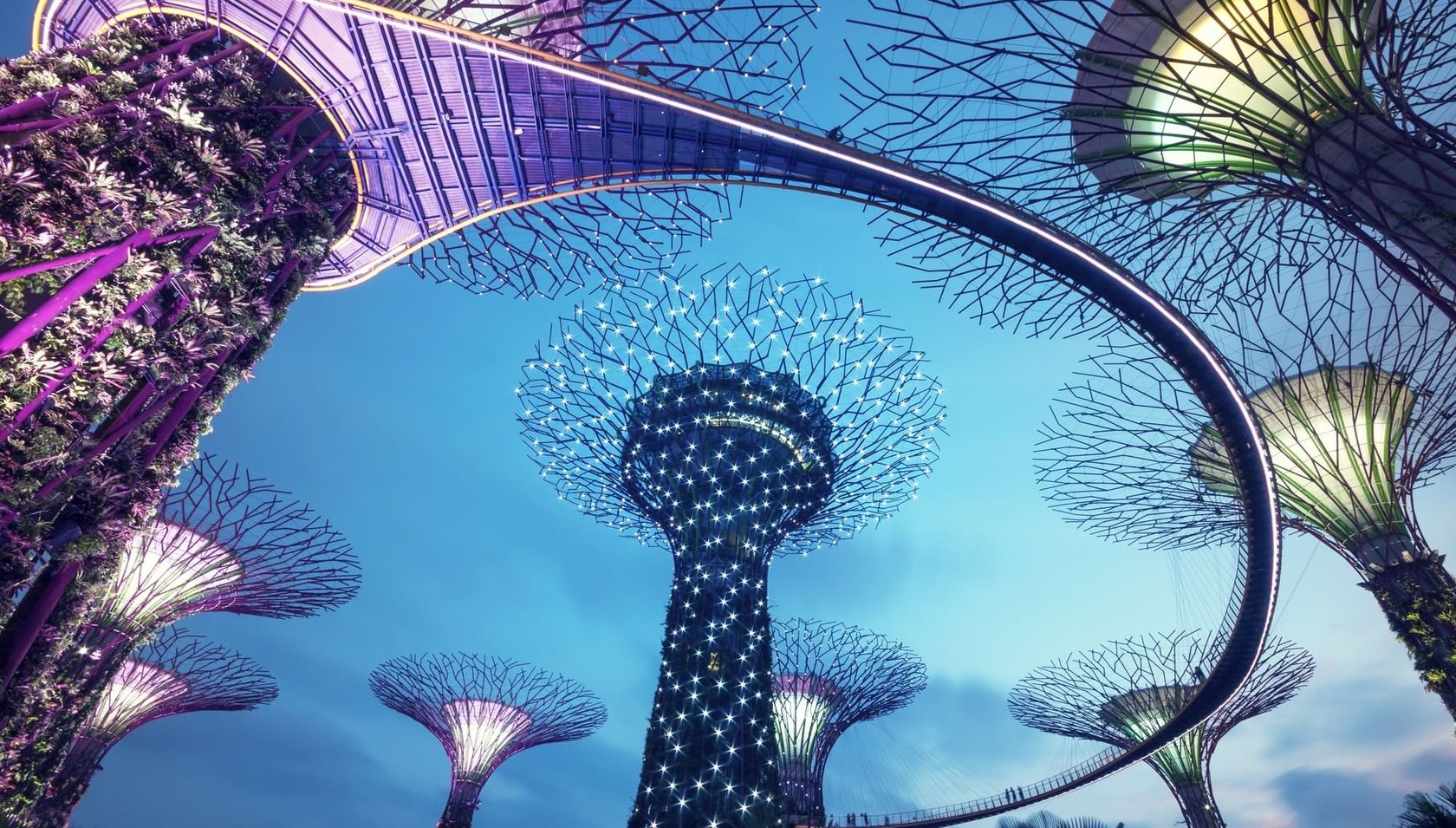These are all things that have been shaping the world as we know it for several centuries. However, some applications of steel can still be mindboggling.
1
-min.jpg)
The start of mass production of steel is considered one of the main factors in the powerful civilisational transformation that became known as the industrial revolution.
Steel has shaped the steampunk aesthetic, too. In steampunk worlds, rather than giving way to internal combustion engines, steam engines reached the peak of their development. This popular science fiction genre and subculture draws its inspiration from 19th century reality with its steam engines, Jules Verne and Herbert Wells books, winding gears, Victorian style, industrial landscapes and, of course, steel.
A piece of artwork exhibited at the Australian National Science and Technology Centre, Questacon, may serve as an example. Among the many interactive exhibits meant to encourage the public to engage in scientific activities, there is a steel sculpture called “A Clockwork Universe” by the artist Tim Wetherell. The installation features moving clock gears and shows a three-dimensional film of the Moon.
By the way, the stunning commercial success of another steampunk icon, the Steel Empire side-scrolling shoot ’em up game (released in 1992 in Japan), introduced the steampunk concept to the video game market as well.
2

At first glance, the Dynasphere – a steel wheel about three metres in diameter – seems to be another steampunk installation. However, it is a real monowheel vehicle, a design that was patented by Dr John Archibald Purves from the UK in 1930. The inventor’s idea for the monowheel was inspired by Leonardo da Vinci sketches.
Despite the vehicle’s extremely bizarre appearance, its market prospects were initially assessed quite positively. Purves even modified the model so that it could carry up to eight people. But the chances of the Dynasphere, and not Elon Musk’s Cybertruck, becoming the steel car of the future proved to be extremely low. While the Monowheel could reach a fairly good speed, it was extremely difficult to drive, steer and brake. So, monowheels never became a real vehicle, although Dynasphere replicas still appear in entertainment shows and are used as amusement rides.
3

According to a World Steel Association analysis of the applications of steel, the construction industry is one of the largest consumers of the alloy. It uses more than half of production volumes of the material. Steel-framed factory buildings have become a familiar part of the modern industrial landscape. However, the steel frame’s capabilities extend far beyond just one-storey factory buildings.
Expanding the range of architectural solutions, some manufacturers now offer prefabricated steel structures to be used as houses of worship. They are temples in the full sense of the word, with all the necessary rooms and external features. The relatively low construction cost of such a building makes it feasible for even a small congregation to finance the project, whereas the durability of steel frames will ensure decades, if not centuries, of use by parishioners.
4

Continuing with the religious theme, one cannot but mention the world’s largest Hanukkah menorah. The huge 10-metre-high candelabra is located in Manhattan, near Central Park. The project was designed by Israeli sculptor and experimental artist Yaacov Agam, who is also known as the father of kinetic art. Agam used steel beams weighing about 1.8 tonnes to create the menorah. Because of the structure’s height, it is impossible to light the menorah candles in the usual manner.
That is why Con Edison, one of the largest energy companies in the US, provides a crane every year to lift all the lighting ceremony’s participants to the top. The Lubavitch Youth Organization, which funded the project, explained the symbolic nature of the nine-branched steel lampstand as follows: “The world’s largest Hanukkah menorah stands as a symbol of democracy. It delivers the message of light over darkness and freedom over oppression.”
5

Another metal structure may also turn out to be of a religious nature, though its true purpose remains a mystery.
Last autumn, while flying over the desert in the US state of Utah, a patrol helicopter crew noticed a large, shiny object jutting out of the sand. When the helicopter landed, the crew saw a metal monolith rising 3.7 metres above the surface. It appeared to be a stainless steel bar with an unknown purpose. The Utah Highway Patrol posted a photo of the object on its Facebook page, but never disclosed its exact location. Nor did the authorities give any guesses as to where it came from or who it might belong to. Some 24 hours after the incident, the pilots and their friends arranged a private trip to the site of the mysterious monument. But alas, it turned out to have disappeared. Utah officials deny any involvement in the removal.
The most widespread theory is that the metal object was an installation by a contemporary artist. Many recalled that the structure resembled the monoliths from Stanley Kubrick’s 2001: A Space Odyssey, based on the works of science-fiction writer Arthur C. Clarke. The authorities emphasised that it is illegal to install a monument on public lands, “no matter what planet you’re from”.
6

Meanwhile, in Asia, they use steel to make … trees. The Supertree Grove is part of the ambitious Gardens by the Bay project being implemented by public authorities in Singapore. It consists of 18 steel and concrete structures 25 to 50 metres high resembling giant trees. They are in fact vertical gardens with rare plant species such as ferns, exotic grapes, orchids and so on growing on them.
Besides being a home for climbing plants and a natural source of shade, the steel supertrees accumulate solar energy, which is used to illuminate the park, and collect rainwater. The Supertree Grove also helps to cool the winter garden system located nearby.
7

Steel high-heeled shoes: designed for the flamboyant Lady Gaga, they do not seem particularly comfortable, but they are undoubtedly the latest fad. This pair was produced by Swedish steel and mechanical engineering company Sandvik in collaboration with renowned fashion designer Naim Josefi. For the project’s designers, the key feature of the shoes is not the raw material they are made from, but the way they are made.
In fact, the shoes were produced using a 3D printer. They sought to demonstrate the vast possibilities of the technology, as well as to promote 3D printing to the broader public. Thanks to the unique properties of steel, this pair will last for many years and will ultimately be almost 100% recyclable!
8
It was no accident that the Swedish fashion designer Naim Josefi was invited to collaborate with Sandvik. One of the designer’s main passions is creating fashion collections made of steel. Four years ago, Josefi presented his highly acclaimed Women of Steel collection at Stockholm Fashion Week. The dresses, created from high quality steel strip, astonished the audience with their dazzling brilliance and futuristic style. Of course, the collection was dubbed a revolution in the world of fashion. Josefi effectively arranged a sort of promotion campaign for the products of a local company that makes the thin steel used in razor blades and scalpels. The project proved to be very labour-intensive and sophisticated; the designer used steel with a thickness of 0.022 millimetres (a quarter of the thickness of a human hair) to make more than 100,000 pieces. They included 18,000 steel sequins in different shades that were hand-stitched on a silk fabric.
9

If celebrities wear shoes and clothes made of steel, then ordinary people could also use a bit of metal … as a dessert. Perhaps that was what the Japanese cities Tsubame and Sanjo were thinking when they decided to add iron-flaked ice cream to the menu in their local cafes. One can easily guess that these towns are famous not only for their entrepreneurial restaurateurs, but also for their steel mills. A local technologist created an ice cream costing almost $4 for 100 grams, which features metal sprinkles and an unexpected flavour. While the dessert certainly seems unusual, tourists who have had a chance to try the novelty say it tastes better than it looks.
10

That’s right, a blue steel balloon dog: this work of art is considered one of the best examples of the pop art genre. Its designer, the artist Jeff Koons, has become famous for creating steel sculptures that resemble primitive balloon animal shapes. Despite the scepticism of some art experts who call the sculptures “kitsch”, the Blue Dog was auctioned for almost $60 million, while his steel Rabbit went for more than $90 million. The Rabbit currently tops the list of the most expensive works of art to have been sold by a living artist. Koons took an existing inflatable toy, cast it in steel, and made a fortune on the idea.
Shoes, clothes, food, trees, churches and cultural benchmarks: the versatility of steel captures the imagination. Despite centuries of active use, mankind keeps finding more new applications for this amazing material.
